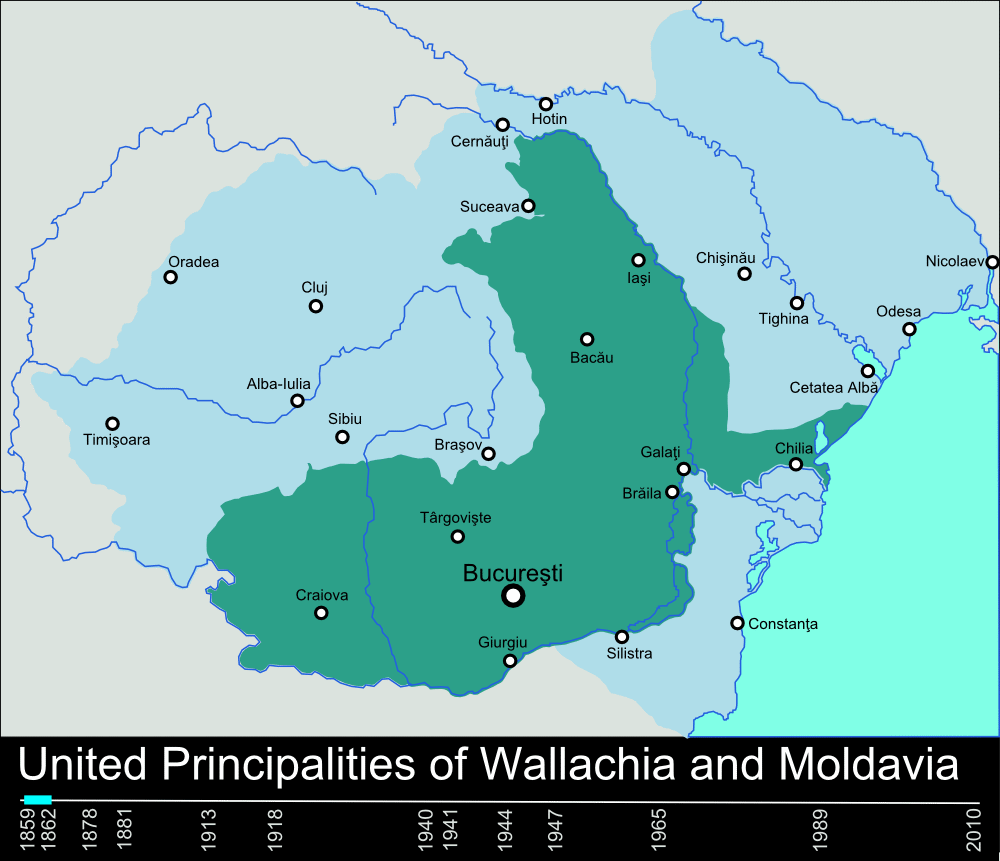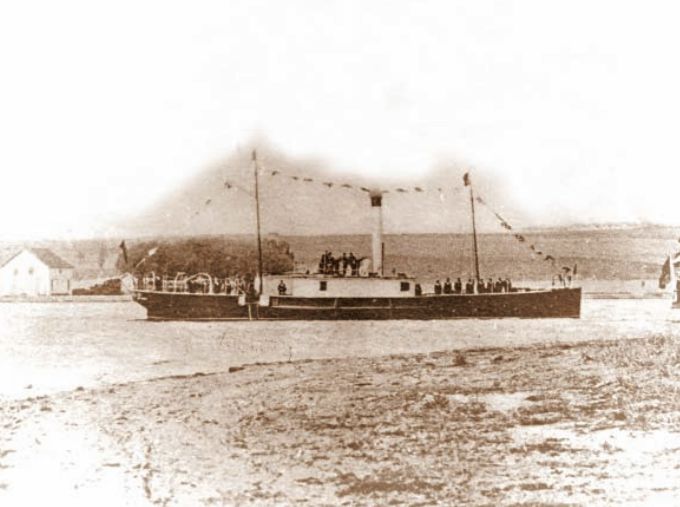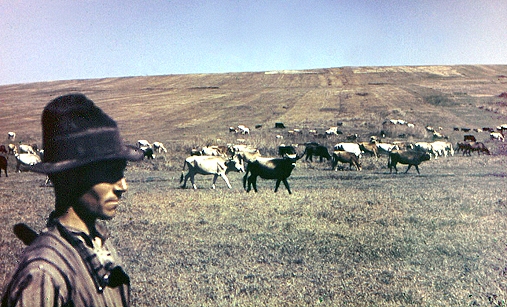|
Southern Bessarabia
Southern Bessarabia or South Bessarabia is a territory of Bessarabia which, as a result of the Crimean War, was returned to the Moldavian Principality in 1856. As a result of the unification of the latter with Wallachia, these lands became part of United Principalities of Moldova and Wallachia. In 1878, despite opposition from Romania, the Berlin Treaty, which followed the Russo-Turkish War (1877–1878), transferred this region back to the Russian Empire The Russian Empire was an empire that spanned most of northern Eurasia from its establishment in November 1721 until the proclamation of the Russian Republic in September 1917. At its height in the late 19th century, it covered about , roughl ... (which reintegrated it into the Bessarabia Governorate). The transfer of the territory took place in October 1878. From 13 to 18 October, Russia took over Southern Bessarabia while the Romanian officials withdrew.Frederick Kellogg, Purdue University Press, 1995, ''The Road ... [...More Info...] [...Related Items...] OR: [Wikipedia] [Google] [Baidu] |
Moldavia
Moldavia (, or ; in Romanian Cyrillic alphabet, Romanian Cyrillic: or ) is a historical region and former principality in Eastern Europe, corresponding to the territory between the Eastern Carpathians and the Dniester River. An initially independent and later autonomous state, it existed from the 14th century to 1859, when it united with Wallachia () as the basis of the modern Romanian state; at various times, Moldavia included the regions of Bessarabia (with the Budjak), all of Bukovina and Hertsa region , Hertsa. The region of Pokuttya was also part of it for a period of time. The Moldavia (region of Romania) , western half of Moldavia is now part of Romania, the eastern side belongs to the Moldova , Republic of Moldova, and the Chernivtsi Oblast , northern and Budjak , southeastern parts are territories of Ukraine. Name and etymology The original and short-lived reference to the region was ''Bogdania'', after Bogdan I, the founding figure of the principality. The name ... [...More Info...] [...Related Items...] OR: [Wikipedia] [Google] [Baidu] |
United Principalities
The United Principalities of Moldavia and Wallachia (), commonly called United Principalities or Wallachia and Moldavia, was the personal union of the Moldavia, Principality of Moldavia and the Wallachia, Principality of Wallachia. The union was formed on when Alexandru Ioan Cuza was elected as the ''Domnitor'' (Ruling Prince) of both principalities. Their separate autonomous vassalage in the Ottoman Empire continued with Unification of Moldavia and Wallachia, the unification of both principalities. On , Moldavia and Wallachia formally united to create the Romanian United Principalities, the core of the Romanian nation state. In February 1866, Prince Cuza was forced to abdicate and go into exile by a political coalition led by the Liberals; the German prince Carol I of Romania, Karl of Hohenzollern-Sigmaringen was offered the Throne and, on he entered Bucharest for the first time. In July the same year, a 1866 Constitution of Romania, new constitution came into effect, giving th ... [...More Info...] [...Related Items...] OR: [Wikipedia] [Google] [Baidu] |
Administrative Divisions Of Romania
Romania's administration is relatively centralized and administrative subdivisions are therefore fairly simplified. According to the Constitution of Romania, its territory is organized administratively into communes, cities and counties: * At the county level: 41 counties, and one city with special status (Bucharest, the national capital) * At the town / commune level: 103 municipalities and 217 other cities (for urban areas), and 2,861 communes (for rural areas). Municipality ''(municipiu)'' status is accorded to larger towns, but it does not give their administrations any greater powers. Below communal or town level, there are no further formal administrative subdivisions. However, communes are divided into villages (which have no administration of their own). There are 12,957 villages in Romania. The only exception is Bucharest, which has six sectors, each with an administration of its own. Historic The earliest organization into ''județe'' of the Principalities ... [...More Info...] [...Related Items...] OR: [Wikipedia] [Google] [Baidu] |
Administrative Divisions Of Moldavia
A ''ținut'' (pl. ''ținuturi''; sometimes translated in English as "region", "district" or "municipality"Gerald J. Bobang, ''The emergence of the Romanian national State'', East European Quarterly, 1979. . p. 227.) were the traditional subdivision of the Principality of Moldavia (1359–1859). Principality of Moldavia (late 14th century – 1859) Lower Country ''(Țara de Jos)'' :Iași County : Cârligătura County (later merged with Iași County) :Roman County :Vaslui County :Tutova County : Bârlad County (later merged with Tutova County) : Tecuci County : Horincea County (later merged with Covurlui County) :Covurlui County : Putna County : Adjud County (later merged with Putna County) :Fălciu County : Soroca County : Orhei County : Lăpușna County Upper Country ''(Țara de Sus)'' : Hotin County :Cernăuți County : Dorohoi County :Suceava County :Neamț County : Hârlău County (later Botoșani County) :Bacău County : Trotuș County (later merged with Bacău C ... [...More Info...] [...Related Items...] OR: [Wikipedia] [Google] [Baidu] |
Romanian War Of Independence
The Romanian War of Independence () is the name used in Romanian historiography to refer to the phase of the Russo-Turkish War (1877–78), in which Romania, fighting on the Russian side of the war, gained independence from the Ottoman Empire. On , Romania and the Russian Empire signed a treaty at Bucharest under which Russian troops were allowed to pass through Romanian territory, with the condition that Russia respected the integrity of Romania. Consequently, the mobilization of the Romanian troops also began, and around 114,000 soldiers were massed in the south of the country to defend against an eventual attack of the Ottoman forces from south of the Danube. On , Russia declared war on the Ottoman Empire and its troops entered Romania through the newly built Eiffel Bridge, on their way to the Ottoman Empire. Due to great losses, the Russian Empire asked Romania to intervene. On , the first Romanian Army units crossed the Danube and joined forces with the Russian Army. Roman ... [...More Info...] [...Related Items...] OR: [Wikipedia] [Google] [Baidu] |
Counties Of Romania
A total of 41 counties (), along with the municipality of Bucharest, constitute the official administrative divisions of Romania. They represent the country's NUTS-3 (Nomenclature of Territorial Units for Statistics – Level 3) statistical subdivisions within the European Union and each of them serves as the local level of government within its borders. Most counties are named after a major river, while some are named after notable cities within them, such as the county seat. The earliest organization into ''județe'' of the Principalities of Wallachia and Moldavia (where they were termed ''ținuturi'') dates back to at least the late 14th century. For most of the time since modern Romania was formed in 1859, the administrative division system has been similar to that of the French departments. The system has since changed several times and the number of counties has varied over time, from the 71 ''județe'' that existed before World War II to only 39 after 1968. The curr ... [...More Info...] [...Related Items...] OR: [Wikipedia] [Google] [Baidu] |
Budjak
Budjak, also known as Budzhak, is a historical region that was part of Bessarabia from 1812 to 1940. Situated along the Black Sea, between the Danube and Dniester rivers, this #Ethnic groups and demographics, multi-ethnic region covers an area of and is home to approximately 600,000 people. The majority of the region (former Izmail Oblast) is now located in Ukraine's Odesa Oblast, while the remaining part is found in the southern districts of Moldova. The region is bordered to the north by the rest of Moldova, to the west and south by Romania, and to the east by the Black Sea and the rest of Ukraine. Name and geography Historically, Budjak was the southeastern Bugeac Steppe, steppe region of Moldavia. Bordered by the northern Trajan's Wall at its north end, by the Danube, Danube river and Black Sea to its south, by Tigheci Hills (just east of the Prut, Prut River) to the west, and Dniester, Dniester River to the east, it was known as ''historic Bessarabia'' until 1812, when t ... [...More Info...] [...Related Items...] OR: [Wikipedia] [Google] [Baidu] |
Bessarabia Governorate
The Bessarabia Governorate was a province (''guberniya'') of the Russian Empire, with its administrative centre in Kishinev (Chișinău). It consisted of an area of and a population of 1,935,412 inhabitants. The Bessarabia Governorate bordered the Podolia Governorate to the north, the Kherson Governorate to the east, the Black Sea to the south, Kingdom of Romania, Romania to the west, and Austria-Hungary, Austria to the northwest. It roughly corresponds to what is now most of Moldova and some parts of Chernivtsi Oblast, Chernivtsi and Odesa Oblast, Odesa Oblasts of Ukraine. It included the eastern part of the Moldavia, Principality of Moldavia along with the neighboring Ottoman Empire, Ottoman-ruled territories annexed by Russia by the Treaty of Bucharest (1812), Treaty of Bucharest following the Russo-Turkish War (1806–1812). The Governorate was disbanded in 1917, with the establishment of Sfatul Țării, a national assembly which proclaimed the Moldavian Democratic Republic i ... [...More Info...] [...Related Items...] OR: [Wikipedia] [Google] [Baidu] |
Russian Empire
The Russian Empire was an empire that spanned most of northern Eurasia from its establishment in November 1721 until the proclamation of the Russian Republic in September 1917. At its height in the late 19th century, it covered about , roughly one-sixth of the world's landmass, making it the list of largest empires, third-largest empire in history, behind only the British Empire, British and Mongol Empire, Mongol empires. It also Russian colonization of North America, colonized Alaska between 1799 and 1867. The empire's 1897 census, the only one it conducted, found a population of 125.6 million with considerable ethnic, linguistic, religious, and socioeconomic diversity. From the 10th to 17th centuries, the Russians had been ruled by a noble class known as the boyars, above whom was the tsar, an absolute monarch. The groundwork of the Russian Empire was laid by Ivan III (), who greatly expanded his domain, established a centralized Russian national state, and secured inde ... [...More Info...] [...Related Items...] OR: [Wikipedia] [Google] [Baidu] |
Russo-Turkish War (1877–1878)
The Russo-Turkish War (1877–1878) was a conflict between the Ottoman Empire and a coalition led by the Russian Empire which included United Principalities of Moldavia and Wallachia, Romania, Principality of Serbia, Serbia, and Principality of Montenegro, Montenegro. Precipitating factors included the Russian goals of recovering territorial losses endured during the Crimean War of 1853–1856, re-establishing itself in the Black Sea and supporting the political movement attempting to free Balkan nations from the Ottoman Empire. The Romanian army had around 114,000 soldiers in the war. In Romania the war is called the Russo-Romanian-Turkish War (1877–1878) or the Romanian War of Independence, Romanian War of Independence (1877–1878). The Russian-led coalition won the war, pushing the Ottomans back all the way to the gates of Constantinople, leading to the intervention of the Western European great powers. As a result, Russia succeeded in claiming provinces in the Caucasus, n ... [...More Info...] [...Related Items...] OR: [Wikipedia] [Google] [Baidu] |
Treaty Of Berlin (1878)
The Treaty of Berlin (formally the Treaty between Austria-Hungary, France, Germany, Great Britain and Ireland, Italy, Russia, and the Ottoman Empire for the Settlement of Affairs in the East) was signed on 13 July 1878. In the aftermath of the Russian Empire, Russian victory against the Ottoman Empire in the Russo-Turkish War of 1877–1878, the European balance of power, major powers restructured the map of the Balkans, Balkan region. They reversed some of the extreme gains claimed by Russia in the preliminary Treaty of San Stefano, but the Ottomans lost their major holdings in Europe. It was one of three major peace agreements in the period after the 1815 Congress of Vienna. It was the final act of the Congress of Berlin (13 June – 13 July 1878) and included the United Kingdom of Great Britain and Ireland, United Kingdom, Austria-Hungary, Third French Republic, France, German Empire, Germany, Kingdom of Italy, Italy, Russia and the Ottoman Empire. Chancellor of Germany Otto vo ... [...More Info...] [...Related Items...] OR: [Wikipedia] [Google] [Baidu] |
Wallachia
Wallachia or Walachia (; ; : , : ) is a historical and geographical region of modern-day Romania. It is situated north of the Lower Danube and south of the Southern Carpathians. Wallachia was traditionally divided into two sections, Muntenia (Greater Wallachia) and Oltenia (Lesser Wallachia). Dobruja could sometimes be considered a third section due to its proximity and brief rule over it. Wallachia as a whole is sometimes referred to as Muntenia through identification with the larger of the two traditional sections. Wallachia was founded as a principality in the early 14th century by Basarab I after a rebellion against Charles I of Hungary, although the first mention of the territory of Wallachia west of the river Olt dates to a charter given to the voivode Seneslau in 1246 by Béla IV of Hungary. In 1417, Wallachia was forced to accept the suzerainty of the Ottoman Empire; this lasted until the 19th century. In 1859, Wallachia united with Moldavia to form the Un ... [...More Info...] [...Related Items...] OR: [Wikipedia] [Google] [Baidu] |




